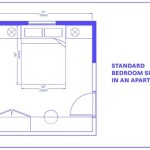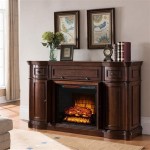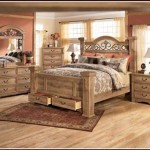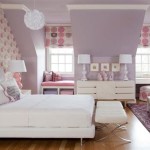Window Treatments For Master Bedrooms: Balancing Light, Privacy, and Style
The master bedroom serves as a sanctuary, a private space for rest, relaxation, and rejuvenation. Creating the optimal environment within this room necessitates careful consideration of every detail, and window treatments play a pivotal role. Effective window treatments moderate light, ensure privacy, enhance aesthetics, and can even contribute to improved energy efficiency. Choosing the right window treatments for a master bedroom demands a thoughtful assessment of individual needs, preferences, and the overall design scheme of the room.
Numerous factors influence the selection of suitable window treatments. These include the orientation of the windows, the level of external light pollution, the desired degree of privacy, and the existing architectural features of the room. Furthermore, practical considerations, such as ease of operation and maintenance, should be factored into the decision-making process. This article aims to provide a comprehensive overview of the various window treatment options available for master bedrooms, highlighting their respective advantages and disadvantages.
Controlling Light and Darkness
One of the primary functions of window treatments in a master bedroom is to regulate the amount of natural light entering the space. Excessive sunlight can disrupt sleep patterns, fade furniture, and create uncomfortable glare. Conversely, insufficient light can lead to a feeling of confinement and limit the versatility of the room. The ideal window treatment should offer a balance between allowing sufficient natural light during the day and providing near-total darkness at night.
Blackout Curtains: Blackout curtains are designed to completely block out external light. They are typically made from tightly woven fabrics with multiple layers or a special blackout lining. These curtains are particularly effective for individuals who are sensitive to light or work night shifts and need to sleep during the day. Blackout curtains are available in a wide range of colors, patterns, and styles, allowing them to seamlessly integrate into any bedroom decor. However, it's important to note that blackout curtains can make a room feel smaller and darker, particularly if they are paired with dark-colored walls and furniture.
Layered Window Treatments: A layered approach combines multiple window treatments to achieve optimal light control and privacy. For example, sheer curtains can be used to filter light and provide a soft, diffused glow during the day, while heavier blackout curtains can be drawn at night to block out all light. This approach offers versatility and allows for adjusting the amount of light entering the room based on the time of day and individual needs. Layered window treatments also add depth and texture to the room, enhancing its visual appeal.
Room-Darkening Shades: Room-darkening shades offer a middle ground between sheer curtains and blackout curtains. They block out a significant amount of light but do not completely eliminate it. Room-darkening shades are typically made from tightly woven fabrics or materials with a special coating that reduces light transmission. They are available in a variety of styles, including roller shades, Roman shades, and cellular shades. These shades are a good option for individuals who want to reduce glare and create a more restful environment without completely blacking out the room.
Ensuring Privacy and Security
Privacy is paramount in a master bedroom. Window treatments can effectively shield the room from prying eyes and create a sense of seclusion. The level of privacy required will depend on the location of the house, the proximity of neighboring buildings, and personal preferences. Selecting window treatments that provide adequate privacy without sacrificing natural light is a key consideration.
Privacy Liners: Adding privacy liners to existing curtains or drapes can significantly enhance their ability to block out visibility from the outside. These liners are typically made from opaque fabrics and are attached to the back of the curtains. Privacy liners are a cost-effective way to increase privacy without having to replace existing window treatments. They are particularly useful for enhancing the privacy of sheer or lightweight curtains.
Plantation Shutters: Plantation shutters offer excellent privacy control and allow for precise adjustment of louvers to regulate both light and visibility. When closed, plantation shutters provide near-complete privacy. When opened, they allow for natural light to enter the room while still maintaining a degree of privacy. Plantation shutters are available in a variety of materials, including wood, composite, and vinyl, making them suitable for a range of architectural styles and budgets. They are also a durable and long-lasting window treatment option.
Top-Down/Bottom-Up Shades: Top-down/bottom-up shades offer unique privacy control by allowing the shade to be lowered from the top or raised from the bottom. This feature allows for natural light to enter the room while still maintaining privacy at eye level. These shades are particularly useful for bathrooms and bedrooms where privacy is a concern but natural light is also desired. They are available in a variety of styles, including cellular shades, pleated shades, and Roman shades.
Enhancing Aesthetics and Style
Window treatments contribute significantly to the overall aesthetic of a master bedroom. They can complement the existing decor, add a touch of elegance, and create a cohesive and visually appealing space. The style of the window treatments should align with the overall design scheme of the room, whether it is traditional, modern, minimalist, or eclectic.
Curtains and Drapes: Curtains and drapes are a classic window treatment option that can add warmth, texture, and sophistication to a master bedroom. They are available in a wide range of fabrics, colors, patterns, and styles, allowing for endless customization options. Sheer curtains can create a light and airy feel, while heavier drapes can add a sense of drama and luxury. The length and fullness of the curtains can also influence the overall look of the room. Floor-length curtains tend to create a more formal and elegant look, while shorter curtains can be more casual and practical.
Roman Shades: Roman shades are a stylish and versatile window treatment option that can add a touch of elegance and sophistication to a master bedroom. They are made from a single piece of fabric that folds up in a series of pleats when raised. Roman shades are available in a variety of fabrics, colors, and patterns, allowing them to complement a wide range of decor styles. They can be customized with different linings to control light and privacy. Roman shades are a good option for individuals who want a tailored and sophisticated look for their window treatments.
Valances and Cornices: Valances and cornices are decorative window treatments that are typically used to conceal the top of curtains or shades. Valances are made from fabric and can be draped, pleated, or gathered to create a variety of looks. Cornices are made from wood or other rigid materials and are typically more formal in style. Valances and cornices can add a touch of elegance and sophistication to a master bedroom and can be used to tie together the different elements of the room's design. They are often paired with curtains or shades to create a layered and visually interesting window treatment.
Beyond these specific types, consider the hardware used with window treatments. Decorative rods, finials, and tiebacks can add to the overall aesthetic. Metal hardware can lend a modern, industrial feel, while wooden hardware complements traditional or rustic decor. The choice of hardware should be consistent with the overall style of the room.
Furthermore, consider the texture and pattern of the window treatment fabric. Textured fabrics, such as linen or velvet, can add depth and visual interest to the room. Patterned fabrics can add a pop of color and personality. However, it's important to choose patterns that complement the existing decor and do not overwhelm the space. Neutral colors and subtle patterns are often a safe and versatile choice for master bedrooms.
Ultimately, the best window treatments for a master bedroom are those that effectively balance light control, privacy, and style while reflecting the individual preferences and needs of the occupants. Careful consideration of these factors will ensure that the master bedroom remains a comfortable, relaxing, and visually appealing sanctuary.

10 Bedroom Window Treatment Ideas The Shade Store
:strip_icc()/bedroom-window-treatment-ideas-24-proem-studio-white-oak-81641b105d1849ad8a44a3daa3961a34.jpg?strip=all)
26 Best Window Treatments For The Bedroom

10 Bedroom Window Treatment Ideas The Shade Store

Our Primary Bedroom Window Treatments The Turquoise Home

8 Ideas To Dress Windows In A Bedroom Beautifully

My Favorite Window Treatment Styles The Green Room Interiors

Budget Friendly Window Treatments A Cozy Sitting Area Worthing Court

Best Bedroom Curtains Ideas For Window Treatments

Window Treatments In Master Bedroom How To Decorate

Best Bedroom Curtains Ideas For Window Treatments








